Realizing Children’s Rights in Venezuela
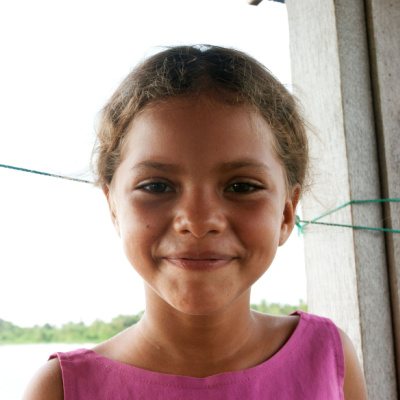
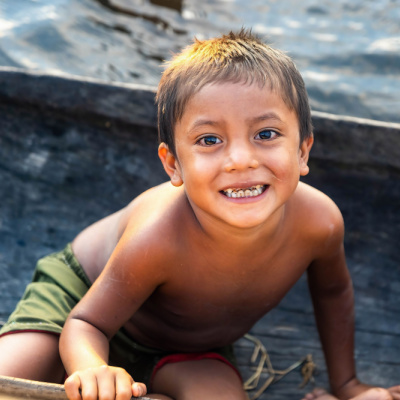
The Venezuelan government is proactively working on reducing various aspects of inequalities present in society, but little can be done in a country still characterized by war and civil strife. Children of Venezuela live in poverty, with limited access to health and education services ever since the economy collapsed in 2014. Sadly, the situation seems to only worsen with a steady increase in child abuse and an ongoing humanitarian crisis.

Children’s Rights Index: 7,64 / 10
Orange level: Noticeable problems
Population: 28 million
Pop. ages 0-14: 26.5 %
Life expectancy: 72 years
Under-5 mortality rate: 24.2 ‰
Venezuela at a glance
Venezuela is located in the northern part of Latin America, neighboring Colombia, Brazil, and Guyana. The country is bordered by the Atlantic Ocean and the Caribbean Sea, making it a paradise for those who enjoy a humid tropical climate.
Venezuela is home to the biggest lake in South America, named Lake Maracaibo, as well as the famous Angel Falls, which are considered the highest in the world. Out of the 28 million inhabitants, more than 6 million people live in the capital of Caracas. The metropolis is well-known as a cultural hub and commercial center. (Lieuwen E, 2022)
In the Bolivarian Republic of Venezuela, people speak Spanish and religiously identify themselves as Christians. The country used to form a part of Gran Colombia, alongside Colombia, Panama, and Ecuador. This union lasted for only eleven years with the purpose to liberate South America from Spanish colonizers. After liberation, the country repaid loans and built infrastructure before becoming an oil giant. The Venezuelan president at the time, Hugo Chavez, “poured billions of dollars of Venezuela’s oil wealth into social programs.” (BBC, 2019)
The economic boom in the 20th century resulted in large numbers of immigrants from neighboring countries, as well massive rural-to-urban migrations, contributing to the frantic rush. Venezuela was already struggling with extreme poverty, as well as the consequences of frequent occurrences of natural disasters when they discovered the world’s largest reserves of petroleum.
The country was consequently transformed into a global energy market overnight. However, continuous incompetent government practices, alongside the American-imposed sanctions, pushed the country into a socio-economic meltdown and hyperinflation. (Lieuwen E, 2022)
More than six million people abandoned their country in pursuit of a better life in Ecuador, Chile, Peru, and Brazil. (BBC, 2021) The Venezuelan oil collapse left the country in turmoil and the aftermath is still a part of the country’s present reality. It is estimated that a staggering 96% of the population still lives below the extreme poverty line. (Ramizer R, n.d.) Consequently, all children became innocent victims of man-made political chaos that surged the country into an endless recession.
Status of children’s rights [1]
It has been 55 years since Venezuela ratified the Convention on the Rights of the Child. In 1967, the government recognized children’s rights to identity, health, education, and freedom.
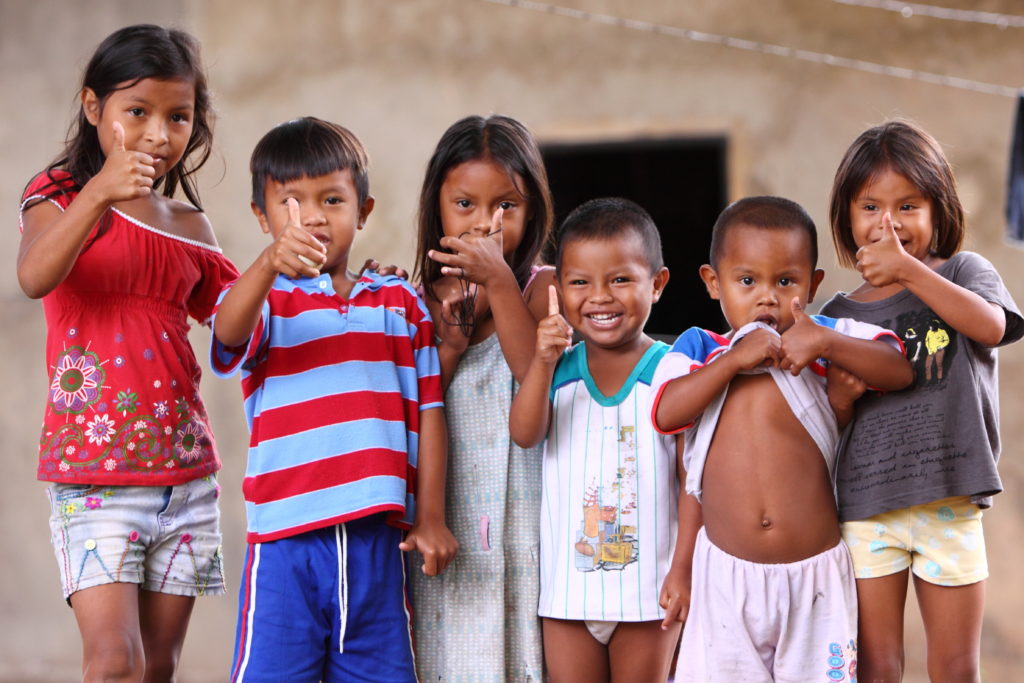
The state has also entitled each and every child to protection from violence. (UNICEF, n.d.) The Bolivarian Republic of Venezuela also signed the International Convention on the Elimination of All Forms of Racial Discrimination (CERD) that guaranteed all children, regardless of their race, descent, and ethnic origin, equal treatment. The right to non-discrimination is the core value of the treaty. All the countries who adopted the protocol are obliged to report on progress and measure results and impact. (UNHR, n.d.)
According to the Optional Protocol to the Convention on the Rights of the Child on the involvement of children in armed conflict, children under the age of eighteen must not actively participate in military training and wars. Children should be studying in school, supported by a safe and nurturing environment appropriate for their age. Although Venezuela ratified the protocol in 2013, the problem continues to persist, as the number of child soldiers is still on the rise. (UNHR, n.d.)
The Ministry of Education passed a law forcing all adolescents to attend two years of military training by the age of seventeen. Children as young as fourteen are eligible to participate as well. Girls are also welcome to apply and serve in the army, whether in a state of peace or an emergency.
To make matters worse, there have been reports of armed political groups from Colombia recruiting child soldiers in Venezuela. Humanitarian organizations around the world have already raised their concerns over breaking the protocol. (Child Soldiers International, 2004)
Unfortunately, things are not starting to look up in 2022. Venezuela is still in the top twelve governments in the world that have been reported to recruit child soldiers and support armed groups. In its annual report, the State Department Child Soldier Protection Act (CSPA) identified Venezuela as the only Latin American country involved in military child abuse. This is the second time that the State Department listed Venezuela as one of the infamous military organizations that have official support from the authorities to use children for war. (Yousif E et al, 2022)
Addressing the needs of children
Right to education
Venezuelan children’s right to education has been severely curtailed for the past decade. Millions of children are missing school because they don’t have access to food, transportation, or other basic necessities. Many schools have shut down during the crisis. Although most of them have been incentivized to reopen classrooms and enroll students, they are only able to work three days a week. According to a national survey from 2018, there are three million children out of school. (Thomson Reuters Foundation, 2018)
Children who get to attend school cannot stay focused or participate in class because most of them lack basic nutrients. Teachers reported numerous cases of fainting among children who were served poor meals in school that didn’t contain essential proteins and vitamins.
Many schools had to cancel physical education classes and other sports activities, simply because the students were not physically fit to perform. Some educators reported record levels of absenteeism in the midst of a lasting humanitarian emergency. (Thomson Reuters Foundation, 2018)
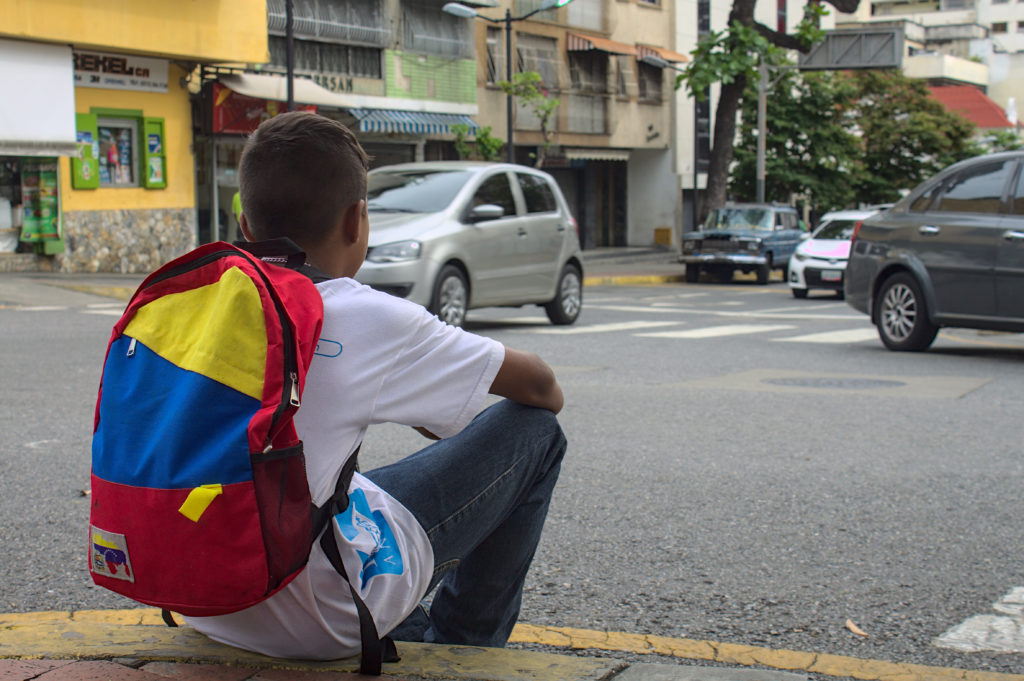
Child refugees in other Latin American countries usually fall victim to rampant corruption and ineffective bureaucratic systems, that keep them out of school. Guardians struggle to obtain documents that would help their child earn admission. However, the government’s inactivity and disinterest resulted in increased numbers of child workers and beggars. In countries like Colombia, without proper education and guidance, many refugee children risk joining local crime groups. (Thomson Reuters Foundation, 2018)
The government of Venezuela is directly violating children’s right to education as they are not providing passports to the child immigrants in order to verify their identities. (Thomson Reuters Foundation, 2018) About one million Venezuelans sought refuge in Peru and Colombia. According to 800 surveys of families in two Colombian cities, 27% of migrant children in the country were still not in school.
The authorities name reasons ranging from understaffed educational institutions to lack of financial means, as well as a lack of or proper identification. Additionally, destitute children are facing discrimination based on their nationality and social status, which prevents them from realizing their inherent right to attend school. (Alcoba N, 2022)
Right to health
Millions of people have fled the country over the past decade. Among them, teachers and doctors are forced to migrate abroad for sheer survival. This situation leaves children in Venezuela in a rather difficult position. The health system was barely surviving in the past, but with the aftermath of Covid-19, medical care has seen a sharp deterioration. At present, children are in urgent need of medicine, antibiotics, immunization, and clean water. Extreme poverty is already threatening their right to health, as “Venezuelans require 136 times the minimum wage of $1.71 per month to access a basic food basket.” (ReliefWeb, 2021)
Yellow fever, measles, polio, and other diseases are on the rise. Most expecting mothers don’t have access to doctors which oftentimes results in underweight newborn infants. According to the most recent data, more than 110,000 thousand children are considered malnourished. To make the situation worse, Venezuela is struggling with more than 80% of underage pregnancies. (ReliefWeb, 2021) Health and nutrition problems are just some of the many pressing issues in the country where people’s livelihoods have been gravely impacted by the economic depression.
Millions of refugees are facing the same impediments in neighboring countries such as Colombia and Peru, which don’t have an established structure to take care of a large number of incoming immigrants. Almost three million people, children included, are in dire need of food, medication, and housing. The Venezuelan humanitarian crisis is considered to be the number one forced displacement in the world in terms of numbers, right after Syria. (Save the Children, n.d.)
Right to protection
In search of a better life, many children cross the neighboring borders unaccompanied, which significantly increases their chances of being abducted, sold, or trafficked.
Women and children who enter foreign countries without documents should be directed to social services that would help protect them in fulfilling basic needs. Transit countries have a responsibility to help migrants by adhering to their rights guaranteed by the Convention. Children should be immediately registered in the system, but also kept safe before reuniting with their families. (UNICEF, 2019)
Parents are struggling to protect their children from constantly present dangers, but their fight seems futile as most of them can’t make ends meet. During the Covid-19 pandemic, children had to stay home because schools were shut down. As they were not able to attend online classes, more children got exposed to abuse and violence.
The country has started a couple of initiatives to try and help the youngest members of society. Some faith-based organizations have taken it upon themselves to provide comfort and be the guiding light in the dark. (World Vision, 2022)
The churches became the meeting points where people came to hear more about how to protect the children during these difficult times. After the Covid-19 outbreak, the training was conducted online, which further limited the number of participants who would benefit from this program. The aim was to educate the masses on children’s rights and basic needs. Social services were also included in the initiative, as they were the ones handling more severe cases of abuse that were out of the trainers’ scope. (World Vision, 2022)
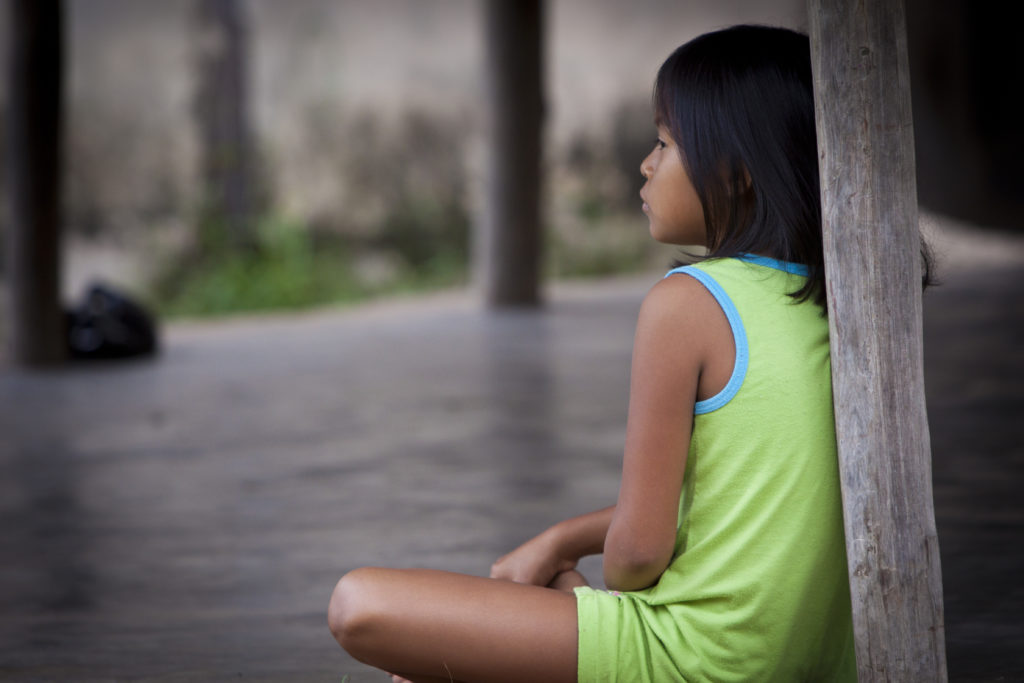
The increased number of adolescent pregnancies, as well as child marriages, was addressed during the meetings. Children have been reported exchanging sex services for food, but frequent occurrences of child sex trafficking and violence also add up to the crisis. Child protection programs aim to solve the issues by making churches a safe place where everyone can learn about the dangers of early pregnancies and marriages. Officials talk about establishing recovery programs and preventative measures to enhance child protection initiatives. (World Vision, 2022)
Risk factors -> Country-specific challenges
Child trafficking
It is particularly challenging to improve the lives of children in a country drained by two regimes fighting. It is a public secret that many regime representatives are also criminals, accused of child trafficking and illicit torture activities. The country is failing to find the culprits and punish them by law. Although the authorities have agreed to issue a decree, they haven’t been involved in identifying child victims or helping them to access post-violence care services and support. (U.S. Department of State, 2022)
Humanitarian organizations propose that authorities impose harsher fines on everyone involved in sex trafficking and forcible child recruitment. The authorities are aware of the existence of army camps on the Colombian border, where children are forced into all sorts of criminal activities. The traffickers then easily lure young children by offering them basic necessities. At this time, “Venezuela has the highest rate in Latin America of people exploited in human trafficking.” (U.S. Department of State, 2022)
It is of paramount importance to educate social workers to deal with children and families that go through physical and mental trauma. Funding should be increased and prioritized to protect the most vulnerable ones. Mass migration issues have to be addressed by joint cooperation between the countries affected. In addition, an anti-trafficking division should establish a public presence. That way the information available in the open would help to permanently ban these illicit practices and set a common ground for international collaboration. (U.S. Department of State, 2022)
Child labor
Venezuela is still struggling with high numbers of child workers, to this day. Young children are involved in strenuous agricultural activities, domestic work, mining, and begging. At this sensitive age, when their motor and cognitive abilities are still under development, children endure more than their bodies and minds can handle. Some are even forced to sell drugs or participate in other illicit activities that stem from sexual exploitation, or human trafficking. The Venezuelan government drafted legislation to protect children from dangers that threaten their lives, but these laws still lack proper implementation. (U.S. Department of Labor, 2017)
The labor law enforcement shortfalls persist to make life in Venezuela extremely unsafe and insecure for children. There is no data on inspectorate funding, the number of inspectors, training, and courses provided, routine inspections conducted, or the existing complaint mechanisms.
“NGOs have expressed concerns that the Government does not effectively monitor employed youth of legal working age to ensure that their employment does not negatively affect their education and that they are not exploited by employers.”
– U.S. Department of Labor, 2017
Covid-19 has made matters worse for most Venezuelans who are already combating political corruption, shortage of food, and substandard living conditions. Considering many people emigrated abroad, some of the children already live by themselves in rural areas, with no other chance of survival but to apply themselves to hard farm work, or even worse, gang affairs.
Although the government is not able to provide the exact number of child workers, NGOs report that there are approximately 10 million children enrolled in the workforce, with a possibility of 300,000 children at risk of falling under the same category due to the 2020 pandemic. (Ramirez C. E, et al. 2021)
Malnourished children
The Venezuelan food crisis is taking a toll on the youngest and most vulnerable part of the population. In 2020 alone, “child malnutrition rates increased to 26%.” (Caritas, n.d.) The county is in desperate need of food, medicines, and vitamins as well as medical staff to administer and monitor the patients. An average family can barely survive on a three-dollar daily budget. Children and pregnant women are in the greatest danger to succumb to the consequences of prolonged famine that can result in death.
Based on the research conducted by Venezuelan Caritas, “the acute global malnutrition in children under five has increased by 73% during the Covid-19 pandemic.” (Herrera-Cuenca M, 2021) The disadvantages that children of Venezuela are facing at such a sensitive age are bound to leave a mark on their future lives.
Not having access to essential nutrients can permanently damage their health, causing chronic conditions and diseases future generations could inherit. Sadly, 33% of children between zero and two years are already suffering from impaired growth and undernourishment. (Herrera-Cuenca M, 2021)
Most children have limited choices to survive. Most of them are forced into labor, recruited by criminal gangs, or even forced to find food in garbage dumps. Children are weak and unhealthy, which affects not only their performance but also the genetic predisposition of the generations to come. The poorest neighborhoods have the largest numbers of skinny and underweight children. According to Susana Rico, the United Nations World Food Program director in Venezuela, “if children miss good nutrition up to age 6, most likely they will not develop the full physical and cognitive potential.” (Otis J, 2022)
Doctors can see how parents are barely able to afford cereals, bread, and other cheap food, instead of the protein that can be found in meat. Milk, fruits, and vegetables are a luxury too, as the land in Venezuela is not fertile. Instead of crops, people put their faith in natural oil reserves. During the unprecedented economic crisis, most of the factories shut down.
Although the government tried to help by distributing food, the US imposed sanctions on Venezuela’s oil delivered the final blow. In 2021, “60% of recipients said food boxes were arriving once every three months or even less frequently,” which has only accelerated the malnutrition crisis and food insecurity. (Otis J, 2022)
Written by Lidija Misic
Internally proofread by Aditi Partha
Last updated on October 16, 2022
Bibliography:
Alcoba Natalie (2022) Venezuelan migrant children struggle to access education. Retrieved from Al Jazeera at https://www.aljazeera.com/news/2022/7/4/venezuelan-migrant-children-struggle-to-access-education, accessed on October 15, 2022.
BBC (2019) Venezuela country profile. Retrieved from BBC at https://www.bbc.com/news/world-latin-america-19649648, accessed on October 14, 2022.
BBC (2021) Venezuela crisis: How the political situation escalated. Retrieved from BBC at https://www.bbc.com/news/world-latin-america-36319877, accessed on October 14, 2022.
Caritas (n.d.) Regional Conferences Caritas Latin America and Caribbean. Retrieved from Caritas at https://www.caritas.org/caritas-internationalis-70th-venezuela/, accessed on October 15, 2022.
Child Soldiers International (2004) Child Soldiers Global Report 2004 – Venezuela. Retrieved from Child Soldiers International at https://www.refworld.org/docid/4988061c28.html, accessed on October 14, 2022.
Herrera-Cuenca Marianella (2021) Understanding children’s undernutrition in Venezuela. Retrieved from The Lancet at https://www.thelancet.com/journals/ebiom/article/PIIS2352-3964(21)00160-2/fulltext, accessed on October 15, 2022.
Lieuwen Edwin (2022) Venezuela. Retrieved from Britannica at https://www.britannica.com/place/Venezuela, accessed on October 14, 2022.
Otis John (2022) Why the kids of Venezuela aren’t getting enough to eat. Retrieved from the National Public Radio at https://www.npr.org/sections/goatsandsoda/2022/01/11/1071485460/why-the-kids-of-venezuela-arent-getting-enough-to-eat, accessed on October 16, 2022.
Ramirez C E, et al. (2021) Pandemic’s hard realities worsen Venezuelan child labor crisis. Retrieved from Reuters at https://www.reuters.com/article/us-venezuela-children-idUSKBN2CR1LX, accessed on December 3, 2022.
Ramirez Rafael (n.d.) The Venezuelan Oil Industry Collapse: Economic, Social and Political Implications. Retrieved from Istituto Affari Internazionali at https://www.iai.it/en/pubblicazioni/venezuelan-oil-industry-collapse-economic-social-and-political-implications, accessed on October 14, 2022.
ReliefWeb (2021) Humanitarian Action for Children 2022 – Venezuela. Retrieved from ReliefWeb at https://reliefweb.int/report/venezuela-bolivarian-republic/humanitarian-action-children-2022-venezuela, accessed on October 15, 2022.
Save the Children (n.d.) Venezuela crisis. Retrieved from Save the Children at https://www.savethechildren.net/what-we-do/emergencies/venezuela-crisis, accessed on October 15, 2022.
Thomson Reuters Foundation (2018) Millions of children missing school in Venezuela’s hunger crisis. Retrieved from Thomson Reuters Foundation at https://theirworld.org/news/millions-children-missing-school-in-venezuela-hunger-crisis/, accessed on October 15, 2022.
UNHR (n.d.) Committee on the Elimination of Racial Discrimination. Retrieved from UNHR at https://www.ohchr.org/en/treaty-bodies/cerd, accessed on October 14, 2022.
UNHR (n.d.) Pledge by Venezuela (Bolivarian Republic of). Retrieved from UNHR at https://www.ohchr.org/en/treaty-bodies/crc/celebrating-30-years-convention-rights-child/pledge-venezuela-bolivarian-republic, accessed on October 14, 2022.
UNICEF (n.d.) 55 years in Venezuela for the rights of children and adolescents. Retrieved from UNICEF at https://www.unicef.org/venezuela/en/55-years-venezuela-rights-children-and-adolescents, accessed on October 14, 2022.
UNICEF (2019) Venezuela migrant crisis: 1.1 million children across the region will need assistance in 2019, up from nearly half a million today. Retrieved from UNICEF at https://www.unicef.org/lac/en/press-releases/Venezuela-migrant-crisis-1.1-million-children-across-the-region-will-need-assistance, accessed on October 16, 2022.
U.S. Department of Labor (2017) Child Labor and Forced Labor Reports. Retrieved from U.S. Department of Labor at https://www.dol.gov/agencies/ilab/resources/reports/child-labor/venezuela, accessed on December 3, 2022.
U.S. Department of State (2022) Trafficking in Persons Report: Venezuela. Retrieved from U.S. Department of Labor at https://www.state.gov/reports/2022-trafficking-in-persons-report/venezuela/, accessed on October 14, 2022.
World Vision (2022) Child Protection and COVID-19: Venezuela Case Study. Retrieved from World Vision at https://www.wvi.org/publications/case-study/child-protection/child-protection-and-covid-19-venezuela-case-study, accessed on October 16, 2022.
Yousif Elias et al. (2022) The 2022 CSPA List at a Glance. Retrieved from Stimson Center at https://www.stimson.org/2022/the-2022-cspa-list-at-a-glance/?fbclid=IwAR1uXKGSr0IPGJwAHLP6n3ir86sblnKPEE_bFeVmgu75F1AEPpazpq0qVaU, accessed on October 14, 2022.
[1] This article by no means purports to give a full or representative account of children’s rights in Venezuela; indeed, one of many challenges is the scant updated information on the children in Venezuela, much of which is unreliable, not representative, outdated or simply non-existent.

